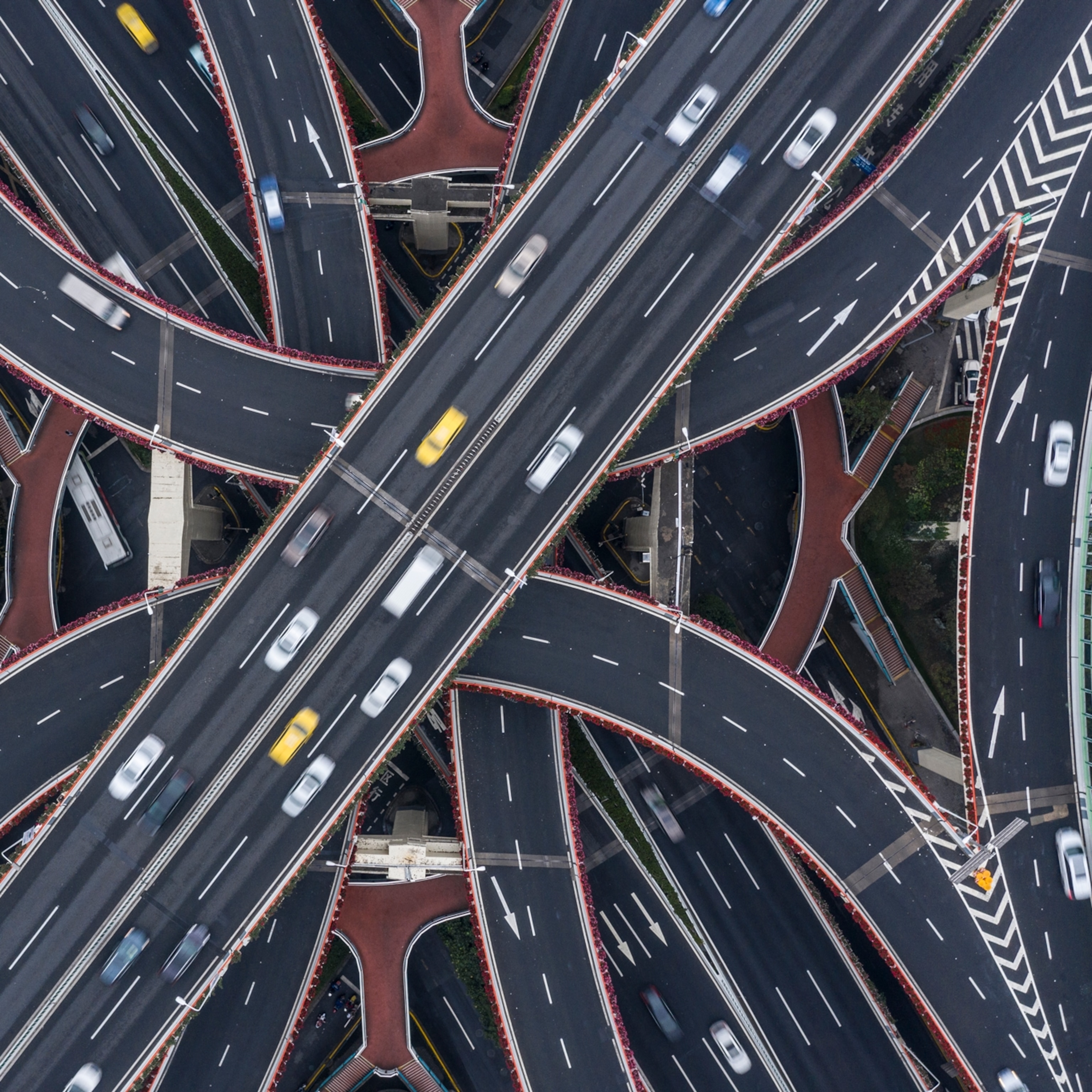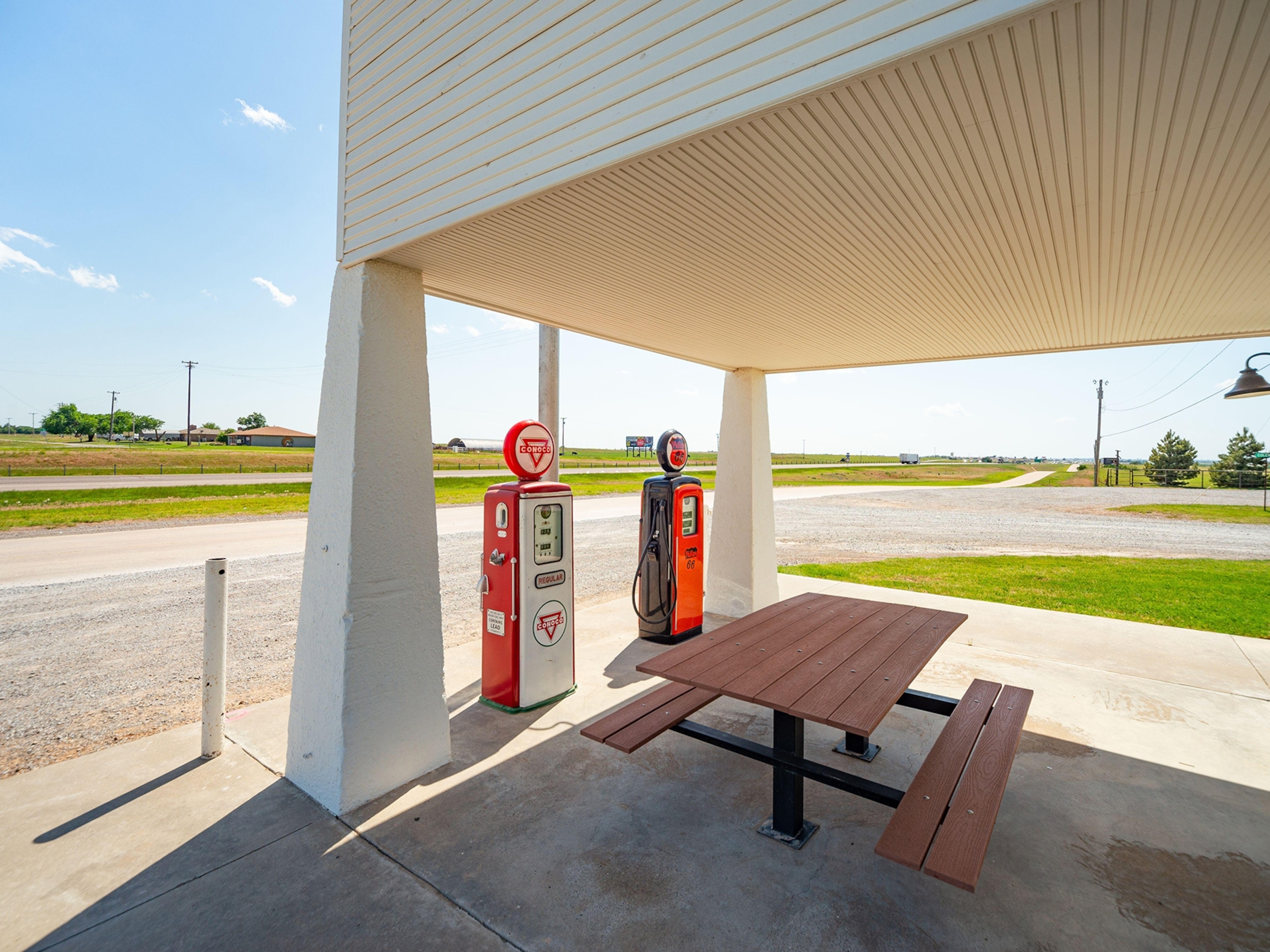
On China's Roads (and Rails), a Move Toward Greener Transit
The market for cars in China is booming, posing severe traffic problems for a country once nicknamed the "bicycle kingdom."
This story is part of a special series that explores energy issues. For more, visit The Great Energy Challenge.
How can more than a billion people travel to and fro, around and through some of the world's most populous and fastest growing cities—without creating epic traffic jams, tapping imported oil or exacerbating noxious air pollution? That's the challenge facing China as it develops a transportation system for its increasingly urban, car-buying population.
A few decades ago, China's city streets teemed with bicycles, earning it the nickname "bicycle kingdom." But today the country's capital ranks as having the worst traffic on the planet, according to a report from IBM. Last summer, a 10,000-vehicle traffic jam snarled more than 60 miles of the Beijing-Zhangjiakou freeway and lasted for 10 days. Easing congestion and reducing pollution from the transportation sector, experts say, will require a stitching together of land use planning, information technology, mass transit development, and cleaner vehicles.
Metropolitan areas around the world—from Los Angeles, California, to Mexico City (which tied with Beijing at the bottom of IBM's report for most "onerous" commute) to Moscow—must wrestle with the task of developing cleaner transportation systems that can handle growing populations.
A Booming Auto Market
The greening of transportation in China, however, holds particular importance and fascination from a global perspective for two key reasons, according to Dan Sperling, director of the Institute of Transportation Studies at the University of California, Davis (which houses the China Center for Energy and Transport). "China has a big share of the world's auto market," he said, "and an ever-expanding share of petroleum use and carbon emissions."
(Related: China's Deadly Air Pollution)
In fact, China zipped ahead of the United States last year as the world's biggest vehicle market. And industry analysts with the research firm Pike Research predict it will be the largest market for all-electric vehicles in 2015, with an estimated 262,203 sales. That would amount to just over 43 percent of the global market, according to Pike Research, compared to 24 percent for Western Europe, 13.2 percent for the United States and 10.2 percent for Japan. (Other analysts are less bullish: J.D. Power & Associates anticipates China will account for 21 percent of global all-electric vehicle sales in 2020, compared to an estimated 62 percent share for Europe, 7.5 percent for the U.S., and 4.5 percent for Japan).
When it comes to plug-in hybrid vehicles, Pike predicts that the U.S. will lead the pack in 2015 with 204,110 vehicles, or 43.2 percent of global sales—largely due to General Motors' Chevy Volt and Toyota's plug-in Prius, senior analyst John Gartner said in an email. Western Europe will account for 16.2 percent of plug-in hybrid sales in 2015, according to Pike's forecasts, while Japan and China will make up 13.1 percent and 10.2 percent, respectively.
According to Zhong-Ren Peng, who chairs the University of Florida's Department of Urban and Regional Planning and is an expert in transportation planning in China, electric cars represent a step in a "good direction" for people in China who can afford them, as these models emit lower levels of greenhouse gases and air pollutants than conventional vehicles (even taking into account China's largely coal-fired power grid, according to McKinsey & Company—although a cleaner energy mix would significantly cut the cars' carbon footprint).
The electrification of personal vehicles, however, offers an incomplete solution. As Peng explained, electric vehicles "cannot solve the fundamental issue of too many cars and not enough roads."
Gold Mine for Green Automakers?
Personal vehicles are still less common in China than in most of Europe and North America, in terms of the number of vehicles per 1,000 people. But the population is quickly switching over to motorized transit options, and in some regions car ownership rates are very high, said Sperling.
(Related: Car Boom Tests China's Safety, Pollution Practices)
Case in point: Beijing, which first hit the 4 million-car mark around this time last year, now has more than 4.7 million vehicles on its streets, according to state media. As many as 21,000 new cars joined the capital's traffic during the week of November 29 to December 5—more than twice the number sold during the same week in 2009.
In response, the municipal government on Monday released a draft regulation that would limit vehicle purchases for personal use, and bar government agencies from buying new cars through 2015. Other proposals in the draft include restricting driving based on odd and even plate numbers, and potentially offering thousands of bicycles for public use in the city.
Still, the world's automakers have high hopes for China's green car market. Among the electric models poised to launch in China during the next few years are General Motors' plug-in hybrid Chevy Volt and Fisker Automotive's luxury plug-in hybrid Karma. Toyota reportedly plans to test plug-in hybrid vehicles in Tianjin ahead of Chinese production and sales starting in 2012. China's largest automaker, SAIC Motor Corp., also plans to launch plug-in hybrid and all-electric models in 2012.
The prospect of introducing the electric Nissan Leaf sedan in China, meanwhile, is "still under study," a spokesperson for the automaker told National Geographic in an email, although the company has partnered with the city of Wuhan for a pilot program that will see 25 electric vehicles rolled out in Wuhan, starting with the Nissan Leaf in 2011.
China has seen electrification take hold in its transportation sector in the past. As Sperling and fellow UC Davis researchers explained in a 2008 paper, several trends that started in the late 1990s spurred rapid adoption of two-wheeled electric vehicles (including scooters and bicycles that combine pedaling and electrical power). Bans on gas-fueled motorcycles in several cities helped to open the door for electric models, and advances in battery and motor technologies made higher-performing, lower-cost two-wheelers possible. Rising incomes allowed consumers to switch to electric two-wheelers from a combination of bicycles and public transport. And as the Davis researchers explain, urban trip distances increased as Chinese cities expanded, "encouraging faster, longer-range bicycles."
As a result, sales of electric two-wheelers in the country had by 2006 climbed to a level on par with their gasoline counterparts (13.1 million units), according to the Davis report, up from "virtual non-existence in the 1990s."
Today, it's not just car companies jockeying for position in a potential EV boom in China. The government has pledged to invest 100 billion renminbi ($15 billion) over the next decade to develop advanced vehicle technology and infrastructure, and companies such as Siemens and ECOtality are hoping to provide charging stations for the country's electric cars. According to Pike Research forecasts, China will garner as much as 48 percent of an estimated $1.9 billion in sales of charging equipment globally by 2015.
China's government has a number of reasons to cultivate electric vehicle development and manufacturing, and to subsidize the market (it offers a $9,000 incentive toward EV purchases). As Sperling explained, China's domestic auto companies, which may struggle to compete internationally with established players in the conventional vehicle market, could "leapfrog" legacy automakers with electric car technology.
Despite all this activity, however, electric vehicles are by no means a sure-fire win in the Chinese market. Battery and plug-in car maker BYD, for example, saw disappointing sales for its electric e6 last year (only 54 units were sold between January and October, according to China's Global Times), and recently shelved plans to produce an all-electric version of its F3DM plug-in hybrid, citing a lack of supporting infrastructure.
Long Road Ahead for Public Transit
In the big picture, according to Peng, plug-in cars will be less important than transportation options such as buses and rail that make it attractive and affordable to skip driving altogether. "Public transportation is probably more important from the perspective of long-term sustainability issues," he said.
Peng noted that China has done a lot of work to improve public transportation (in the IBM report, Beijing had by far the highest percentage of respondents saying traffic had improved in the last three years), but he believes the country has a long way to go, particularly when it comes to improving bus operating systems.
In many areas, he said, buses run "based on the old traditional way," using little or no information and communication technologies. He'd like to see real-time information about bus schedules made available to riders' cell phones. This would help make public transit more convenient, lower "perceived wait times," and help make public transportation "more cool."
Real-time information is already available for some buses in Shanghai and other major cities, noted Peng. But this openness would be a significant leap from the status quo in other areas, where many bus stops lack even a posted schedule, he said (committing to a schedule, said Peng, would open operators to the risk that "people will question: Why is the bus not here?"). "The bigger issue" with bus operating data, said Peng, is how it's shared—with researchers like himself, as well as between various controllers in a city like Beijing. While data may be collected, he said, "institutional barriers" make it difficult to share, and "there's no systematic way of using it."
Beyond China's roads, high-speed railways are being constructed at breakneck pace. In just six years, U.S. Secretary of Energy Steven Chu said in a speech in November, China has built the world's largest high-speed rail network. By the end of the decade, said Chu, it could become larger than the rest of the world's high-speed rail combined.
Like electric cars, however, railways do not offer a complete solution in isolation; how development unfolds around the stations matters, too. High-speed rail station planning rarely takes into account what's known as "transit-oriented design," so it risks congestion caused by "mushrooming development," he said. But the country still has an opportunity to "do a better job of planning ahead."
Ideally, said Peng, those plans would feature high-density, mixed-use development centered on a major transit station. Accomplishing this will require close integration of land use, real estate and railway planning early on, said Peng.
"People realize the value of proximity to a rail station," said Peng," noting that where high-speed rail stations are built, the price of land goes up. "So how do we make it work for people who want that convenience and accessibility?"
Much of China's intercity high-speed railways are traveling through "vacant land," where communities can be designed from the get-go around a rail station. Due to the "high cost and long process of purchasing land and relocating existing residents and firms," said Peng, high-speed rail stations are usually located in suburban areas around a city.
Even in more developed areas, relatively simple adjustments (such as changing the orientation of certain streets near a station and coordinating with the urban transit system), Peng said, can help encourage mass transit ridership, and minimize reliance on personal vehicles. At the same time, "intra-city rail, particularly with good transit-oriented design," said Peng, "could discourage sprawl." For now, the onetime Bicycle Kingdom has a long road ahead in the march toward cleaner, greener transportation.








